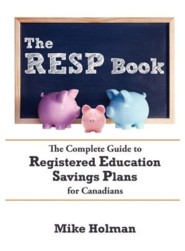One question which I’ve been asked a few times is how trading commissions affect RESP contributions and grants.

Here is an example of one such question from Phil:
I am from Montreal, I read your book (great!) and I opened a family RESP last month with Questrade for my son (age: 1). My intention is to use Ishares ETF (XWD @ 70% and XIC @ 30%) because he is young and I am able to take some risks.
I initially wanted to go with TD E-serie (following your advice) but it was not possible to get the QESI (Québec Education Savings Incentive) thru them. In this particular case I think the best option is Questrade.
My question: How commissions are considered in the RESP. Are they deducted from the contribution and the net contribution is considerated for CESG and QESI calculations OR the contribution is the gross amount even if a part of the deposit is deducted to pay trades ?
For example, if every year I put $2509,90 in the RESP account ($2500 in contributions plus $9,90 for the cost of 2 trades), what will be the amount of my contribution thru the Government for these years: $2500 or $2509,90. For one year, there is not a big difference but after many years, a misunderstanding of this rule can make a big difference.
The answer
Trading commissions are not relevant when calculating RESP contribution amounts and grants. Any money that is moved from a non-RESP account to an RESP account is considered a contribution. Once the money is inside the RESP account, it doesn’t matter what happens with that money – commissions or no commissions.
For example, if you move $1000 from your bank account to your RESP account – you have made a $1,000 contribution and will receive the appropriate amount of RESP grants.
If you take that $1,000, buy $900 worth of ETFs and pay $10 in commissions, the RESP contribution is unaffected. It is still a $1,000 contribution.
In your example – someone who has $2,500 of grant-eligible contribution room and contributes $2,509.90 will only get the grant calculated on $2,500. The extra $9.90 will not be eligible for a grant.
I don’t recommend contributing money to an RESP if no grant will be received. That excess money should go into a TFSA instead.
This applies to RRSP and TFSA accounts too
FYI – The same logic applies to TFSA and RRSP accounts. Money moved into the account is a contribution. Any fees paid on transactions inside the account do not affect the contribution amount.
Questrade ECN fees
One other thing – when calculating trading commissions at Questrade, you must include ECN fees. For securities that trade at $1 or more – the fee is $0.0037 per share. It’s $0.0009 for stocks with share value less than $1. This is an extra charge.
In Phil’s case, he might end up buying 73 shares of XWD and 34 shares of XIC which will result in ECN fees of $0.27 and $0.13 respectively, which is added to the base fee of $4.95 per trade. The total commissions for those two trades will be $10.30, not $9.90 as he indicated in his example.
More RESP information
RESP Rules – A list of all the RESP article on Money Smarts Blog
The RESP Book – The simple guide to RESPs.